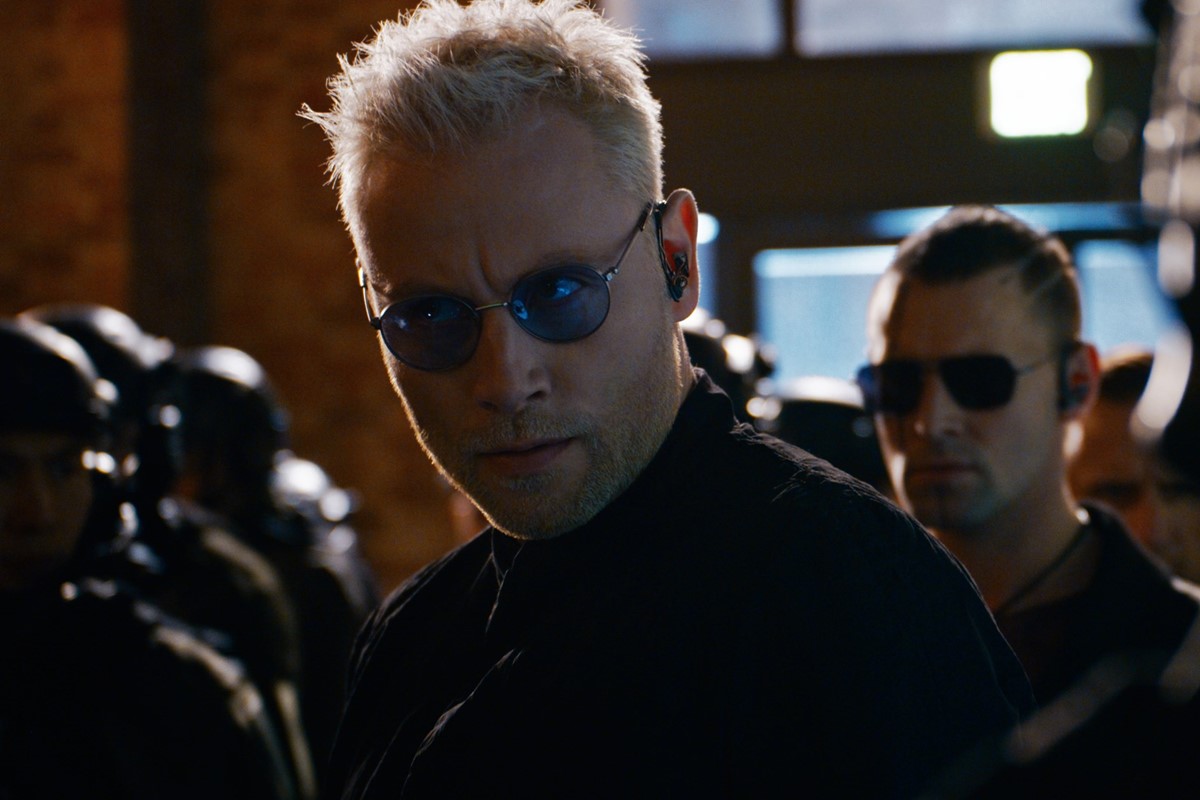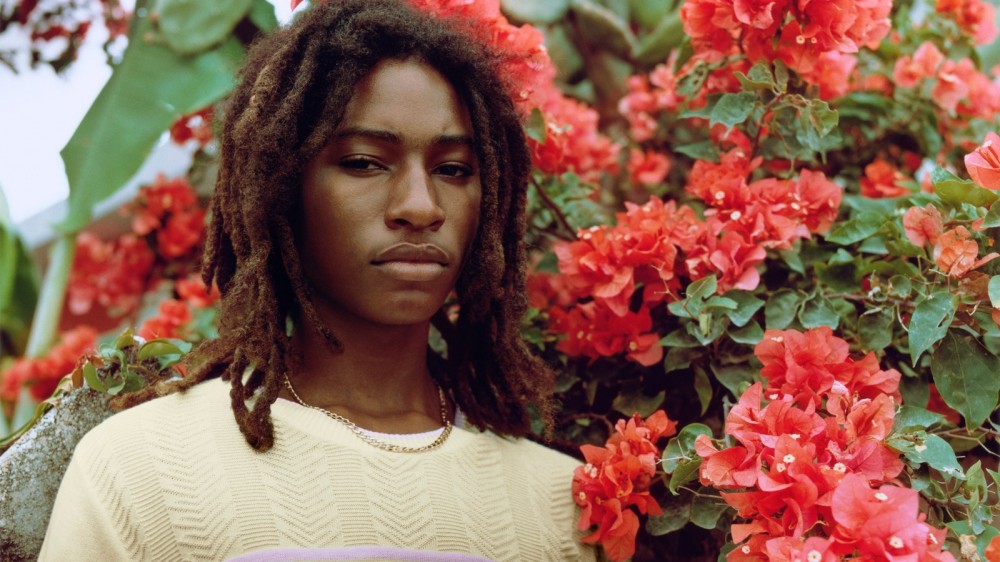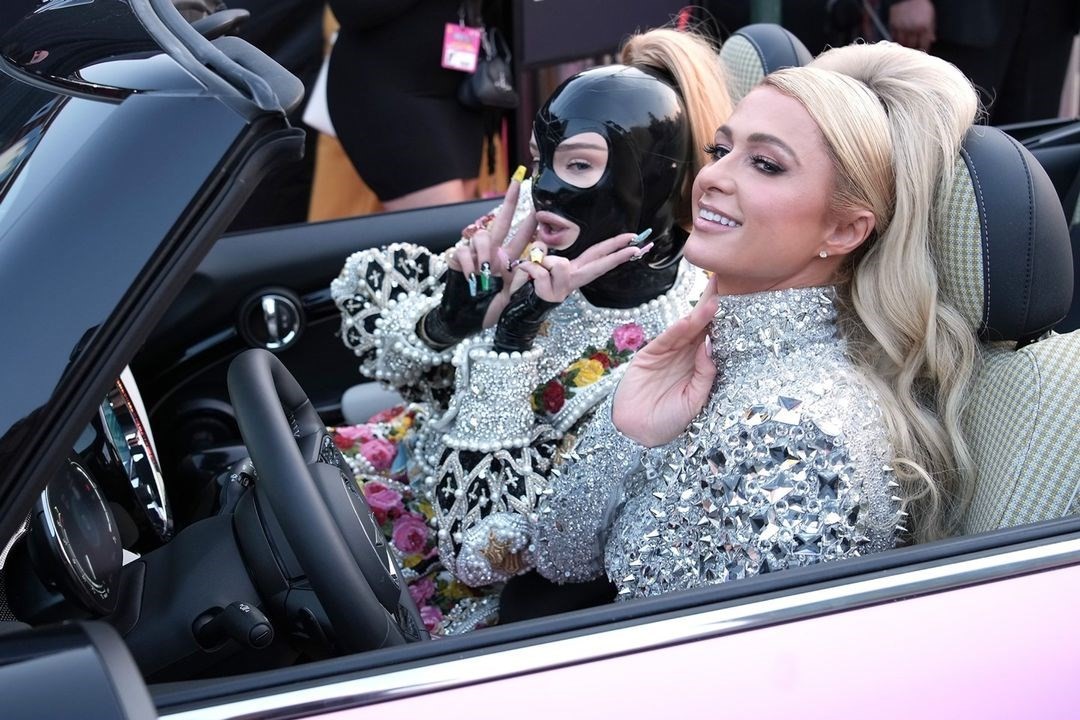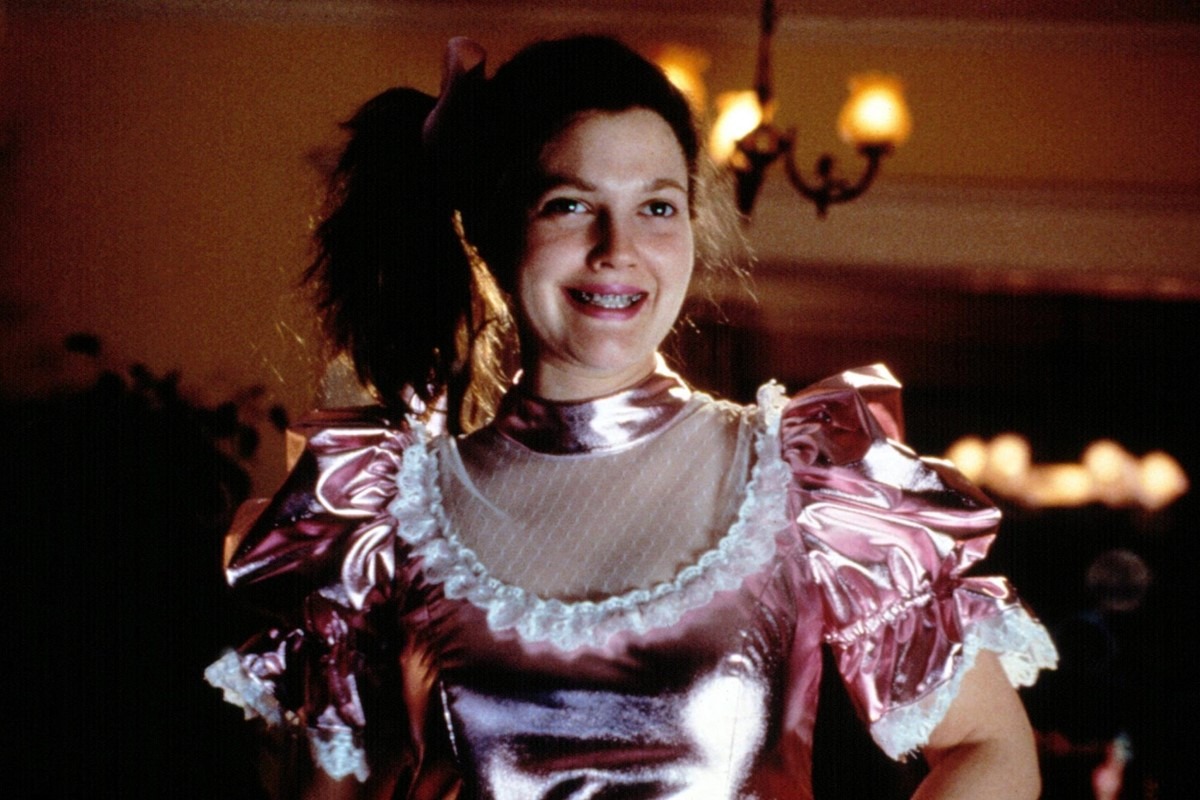
The Matrix’s costume designer on the franchise’s chokehold on fashion
Season after season, the films’ techno-indebted look is one of the industry’s hardest working references. Here, The Matrix Resurrections’ Lindsay Pugh talks PVC trench coats, Yohji Yamamoto, and why she didn’t want to make ‘action costumes’
Whether you’re a die-hard Wachowski sisters fan or simply tapped in via Topshop sale (RIP), if you’ve stepped out in an ankle-length, PVC coat any time in the last two decades, you’ll have been on the receiving end of some quip about The Matrix. Back in 2018, Dazed’s former head of fashion, Emma Hope Allwood, reflected on the film’s sartorial relevance, while the following year Vulture characterised high fashion as “just The Matrix cosplay now”. In 2021 we’re deep into the Y2K revival, and Neo, Trinity, and Morpheus’s fits are the blueprint.
“All of the costumes are fairly immune to period, which is what makes them relatable, even now,” costume designer Kym Barrett told The Guardian last year. Barrett, who worked on the first film in 1999, as well as 2003’s The Matrix Reloaded and The Matrix Revolutions, is effectively responsible for this mammoth cultural moment, which in its latest guise has everyone from the Kardashians to Dua Lipa and Chloe Bailey donning mini sunglasses and heavy leather boots.




Originally informed by traditional Chinese robes and those worn by the clergy, the iconic coats of Neo and Morpheus (Keanu Reeves and Laurence Fishburne) were designed with an image of the future in mind, and a superhero-like sentiment at their core. The tight PVC Carrie-Anne Moss’s Trinity wears, while more in sync with oil spills, was similarly conceived to highlight the contrast between the matrix (set in 1999) and the real world (a fictionalised, post-war 2199).
Revived by Lana Wachowski, the franchise’s latest film arrives almost in tandem with a kind of warped reality (IRL), as each press briefing pushes us further into an episode of Black Mirror and every other Instagram OOTD mirrors The Matrix’s visual language with barely a glitch. On screen and set 20 years after Revolutions, The Matrix Resurrections introduces several new characters – and a handful of new characters with a history (read: Yahya Abdul-Mateen II and Jonathon Groff stepping in for Fishburne and Hugo Weaving) – new looks, and some pretty exquisite new frames.
Taking the reins from Barrett is costume designer Lindsay Pugh, who first began working with the Wachowski’s on Netflix show Sense 8. Below, she tells Dazed about continuing the legacy, her rabbit hole of research, and the joy of dressing Yahya Abdul-Mateen II in rainbow-coloured tailoring.

Hey Lindsay! What was your introduction to The Matrix, were you a fan of the original films?
Lindsay Pugh: Of course! It’s so seeped into my psyche, everybody’s psyche, isn’t it? The first Matrix film, what that did, how it looked, it made us change our view on everything. I then worked with Lana and Lilly on Sense 8, so I’d been with Lana for a good three years before (The Matrix Resurrections), although I don’t think The Matrix was in Lana’s mind at that point.
Kym Barrett was the costume designer on the first three films. Were you apprehensive about stepping into her shoes?
Lindsay Pugh: Absolutely. When we think of The Matrix, we immediately have a visual image that pops into our head, and Kym was responsible for that. So I was very aware of filling those boots. It is a different movie, however. I didn’t have to copy her, (but) I had to pay my respects to that first movie and by doing so pay my respects to her.
The earlier costumes are so iconic at this point, what was that responsibility like?
Lindsay Pugh: It felt very responsible, to work within all aspects of The Matrix. It is such an iconic movie. It’s a very intellectual movie, too. People are thinking about it a lot, so that was a very responsible position to be in. And also, just to do right by Lana and everybody else in the movie. I took that very seriously.

What were your early conversations with Lana like, in terms of setting a brief?
Lindsay Pugh: Lana is very collaborative. This isn’t direct from the other movies – there was a very different view on it – but Lana obviously wanted it to have that Matrix language, because it is part of the series, so there was a conversation about that. I think Lana is iconoclastic, so there’s certain elements in this movie where she wanted to break down our perceived remembrance of a few of the characters.
And in terms of your broader research, what were your reference points?
Lindsay Pugh: So, for the real world there was a very broad bunch of research. This real world is very different from the original series – time has moved on and there is no war, so people in the real world are allowed to concentrate on themselves. That was an interesting way of looking into craft and how you would build fabrics and materials from nothing. It was looking into different natural fabrics and how you could make plant fabrics in a different way than we do. There was a rabbit hole of research going on through all of that. For the matrix, really it was just referring to those three movies and then going back again and looking at them from a different standpoint, seeing how you can approach the visual mood of those movies in a modern day setting.

Obviously the film had a massive influence on fashion, and today especially, that aesthetic is highly visible. How did you navigate setting the new costumes apart from contemporary trends?
Lindsay Pugh: Well, it’s two ways, right? You have to play into that – the original Matrix was very much a film of its time, and this one has to, hopefully, be a film of this time. It just so happens that these two fashion moments are similar and this fashion moment is built off when the original Matrix came out. It was good to blend both of those ideas together, although fashions do revolve; they change slightly, update slightly and alter slightly, it evolves. So what was interesting was taking the idea of the mood, some of the silhouettes from the first movie, and evolving them in the way that fashion has evolved.
Sunglasses have always been a key part of that visual language, and this continues in The Matrix Resurrections…
Lindsay Pugh: This is one of the things that we think about when we think of The Matrix, so it was one of my first, not concerns, but first thoughts – how I do this and how I do justice to that? There is a terrific sunglasses designer called Tom Davies who worked closely with us, designing the glasses for the different characters to evolve some of them from the original film, and then to design around the new characters and what they have to do and wear. That was a very interesting time.

Neil Patrick Harris’s character doesn’t wear sunglasses but has some interesting blue frames. Can you speak on this?
Lindsay Pugh: So there was always a conversation about Neil having glasses and about the type he would wear. We had a very long and interesting fitting with Lana, and she was very sure that she wanted blue frames for him – I’ll leave why with you – but we had a long conversation about what that means, where that takes us, how that will show itself in the movie. It was a very specific note from Lana.
Bugs, played by Jessica Henwick, is another new character. What was it like starting totally anew?
Lindsay Pugh: I enjoyed dressing her. I wanted to follow through with the dark mood of The Matrix, but also be slightly whimsical, because she is a new character and I wanted to bring a new bend on the characterisations there. So I used (Yohji) Yamamoto as a mood for her. She has strong leather jackets, she’s definitely within the Matrix forum, but then with soft pink silk trousers, just to knock it off a little bit.

Yahya Abdul-Mateen II’s Morpheus has some fantastic suits.
Lindsay Pugh: Morpheus in the original was very smart, very formal, and definitely an authority figure. I wanted to keep that, but very much update it. The actors between the two movies are very different, and I wanted to have some really strong colour, just to make an obvious change between the old and the new Morpheus. There is a really fabulous design house in New York called Sies Marjan – they were the reference for all of Yahya’s costumes, which we made in-house. Also Yahya just wears clothing so terrifically and enjoys it, it was really good fun making and tailoring for him.
Elsewhere we find Trinity living in the matrix as Tiffany, wearing leather jackets that offer a subtle hint at her life in the real world.
Lindsay Pugh: Within the matrix, within the life that she has, she still has these elements of Trinity from the first movie – she still enjoys riding bikes, works with bikes, has that speed wish – so I wanted that to play out in her costuming. And again, just a little nod that we are still part of this whole Matrix frame.

From a technical point of view, what were some of the challenges or surprises you had to navigate?
Lindsay Pugh: Always on projects like this the challenges are how to not compromise the costumes and still allow the actors to do the stunts and the special effects; how to make an action movie without making action costumes. So you work out how you want it to look and then work backwards. How to make them look like that while they’re jumping off a 40 storey building, for example.
I was going to ask, near the end of the film we see Trinity and Neo jumping in those great coats, a throwback to the original. Can you speak about this?
Lindsay Pugh: What I wanted to do with Neo was gently bring him through this movie, to the payoff at the end – at some point the audience wants that payoff, to be in the position they were in watching the first Matrix with these iconic silhouettes. So you have those flowing coats and get that same movement with air through the costume, you get that visual. That was a long planned and hopefully successful way to do that. I also wanted there to be equality between Neo and Trinity, so they both had to be equal in whatever that coat means for everybody. It was important those two characters have equal strength at the end.
Do you have a favourite outfit, or character to dress?
Lindsay Pugh: They all have their great moments. I liked Trinity’s outfit when she was in her bike shop. That was successful, the way that that worked, really showing the essence of the character. It was interesting dressing Jonathan Groff because of who he was playing and how that was going to be represented, as Agent Smith. And Yahya, just making beautiful tailoring for the new Morpheus was a really enjoyable time.
The Matrix Resurrections is in cinemas now




